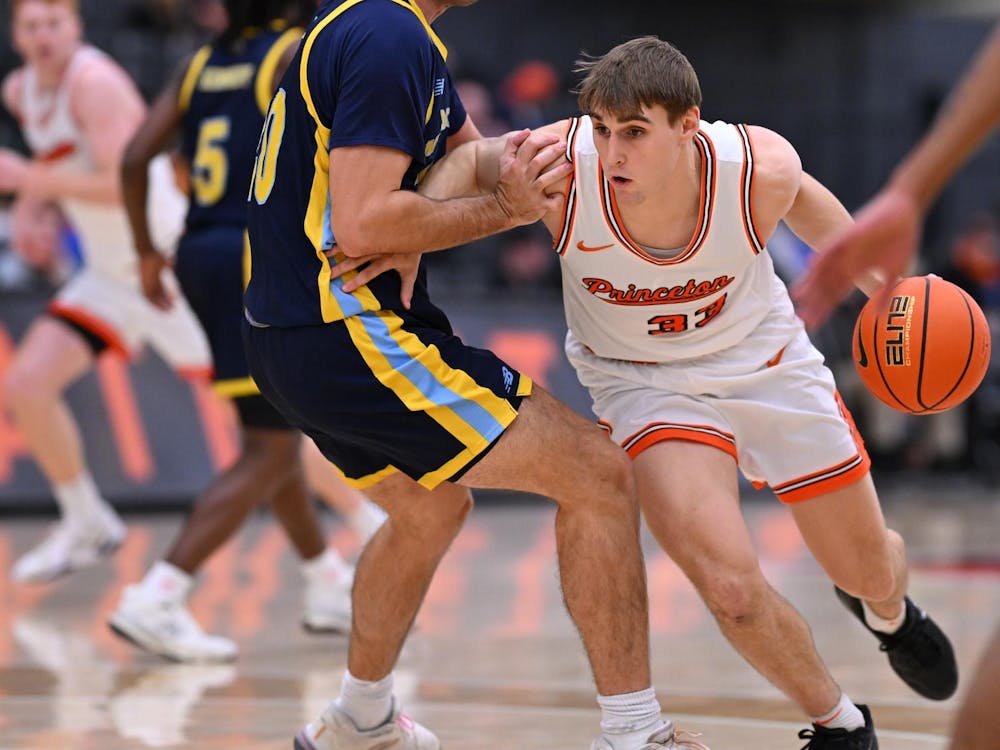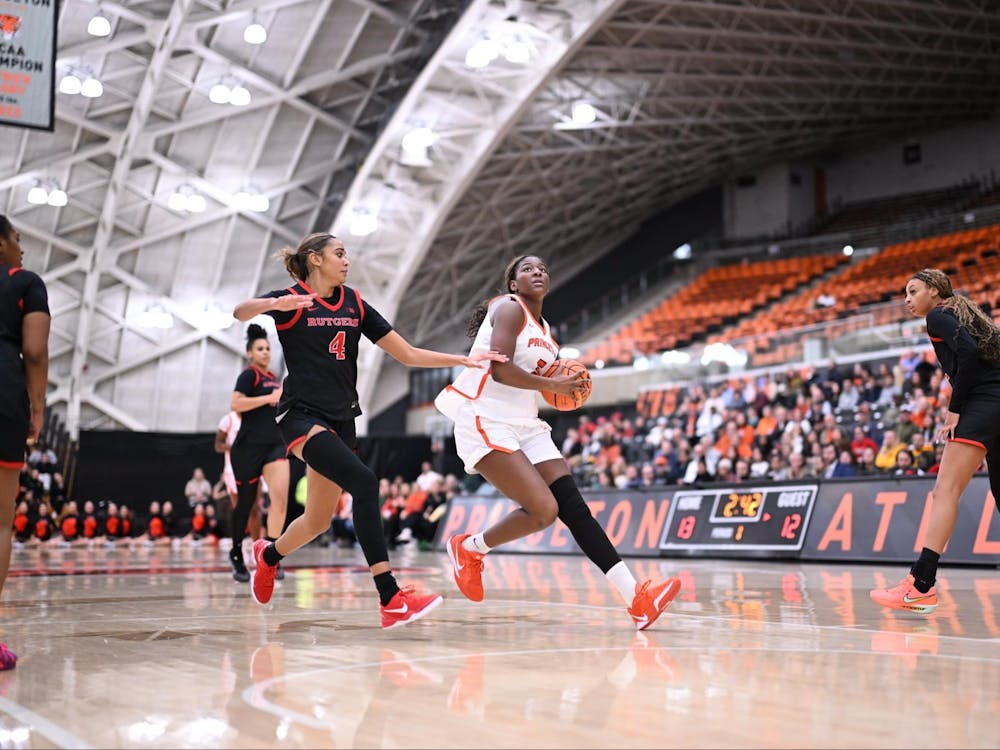Last Friday Princeton notched three goals while playing its first of two games against Niagara. The Tigers, however, lost 3-1 to the Purple Eagles partly because they hit a shot into their own net.
The weekend was just one of many in which the women's hockey team struggled with several offensive problems. With the league's No. 4 point scorer and No. 4 freshman scorer — junior forward Andrea Kilbourne and freshman forward Gretchen Anderson — skating in the front line, it's perplexing that the Tigers continue to have such a hard time sinking the puck. Several key factors continue to hinder Princeton's performance.
Factor 1: Sloppy shooting. Princeton is a fast team, but sometimes too fast with the puck. Frequently, Princeton has watched quick and sloppy shots graze the side of the goal post and never go in. They have also witnessed teammates score for the opposing team as mentioned above.
"We definitely have not had luck on our side this year," junior defender Aviva Grumet-Morris said. "We've had many near misses. It's sort of emblematic of our season."
Factor 2: Bunch scoring. Princeton likes to score goals in bunches — as well as allow goals in bunches. In the game against New Hampshire Jan. 6, the Tigers got off to a good start — scoring two goals in the first period and one in the second — to lead the Wildcats 3-1 heading into the third. UNH, however, answered with its own bunch of goals in the second and third periods and eked out a narrow 4-3 victory over Princeton.
"Losing to UNH before was devastating," senior captain and forward Abbey Fox said. "Losses like that really sting."
"We're a streaky team," Grumet-Morris said. "We get goals in bunches; we don't play consistently."
When the Tigers do manage some consistency, the results are apparent. Princeton faced off against Maine earlier this season with the knowledge that Maine was favored to win the contest. The Tigers, however, adapted to the Black Bears' style to spread their offense, registering goals in all three periods and handing Maine a 4-3 upset.

Factor 3: Lack of endurance. Tying into Factor 2 is Princeton's failure to play hard for the full 60 minutes of each game. The Tigers either expend all of their energy in the first half of the game, as they did against UNH, or they wait until the final minutes of play to enter the game. By the third period it's usually too late, as Princeton realized after playing Dartmouth earlier in the season.
In its first game against the Big Green in November, the Tigers waited until the third period to gain any momentum. In that particular contest, Dartmouth was the first to light up the scoreboard, gaining a 2-0 lead as they headed into the second period. Princeton showed some vital signs in the second period and managed to hold back the Big Green from scoring any more in that stanza.
It was not until the third period, however, that the Tigers managed their first goal of the day. That goal came roughly halfway into the final period and was quickly followed by another goal within thirty seconds. These efforts, however, came too late for the Tigers, who eventually fell, 3-2.
Princeton is certainly capable of overcoming all these factors and pulling off an upset. They have done it before, and not too long ago. Just last week the Tigers handed then-No. 4 Harvard a 3-1 upset in a game in which they spread out the scoring and held onto the lead until the buzzer sounded.

Currently in tenth place with 15 points in the Eastern Collegiate Athletic Conference, the women's hockey team (11-11-3 overall, 6-11-3 ECAC) is looking to dish out some upsets this weekend when they take on ninth-place Maine and sixth-place New Hampshire on Saturday and Sunday, respectively.







